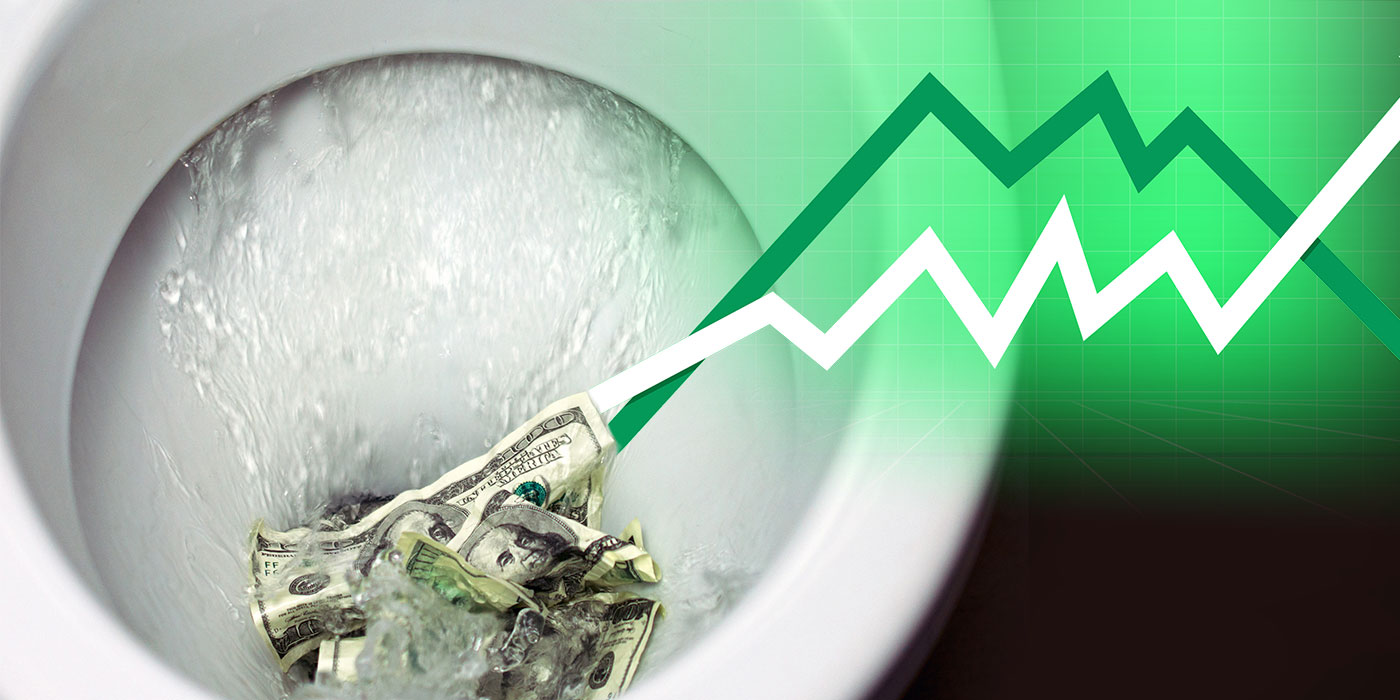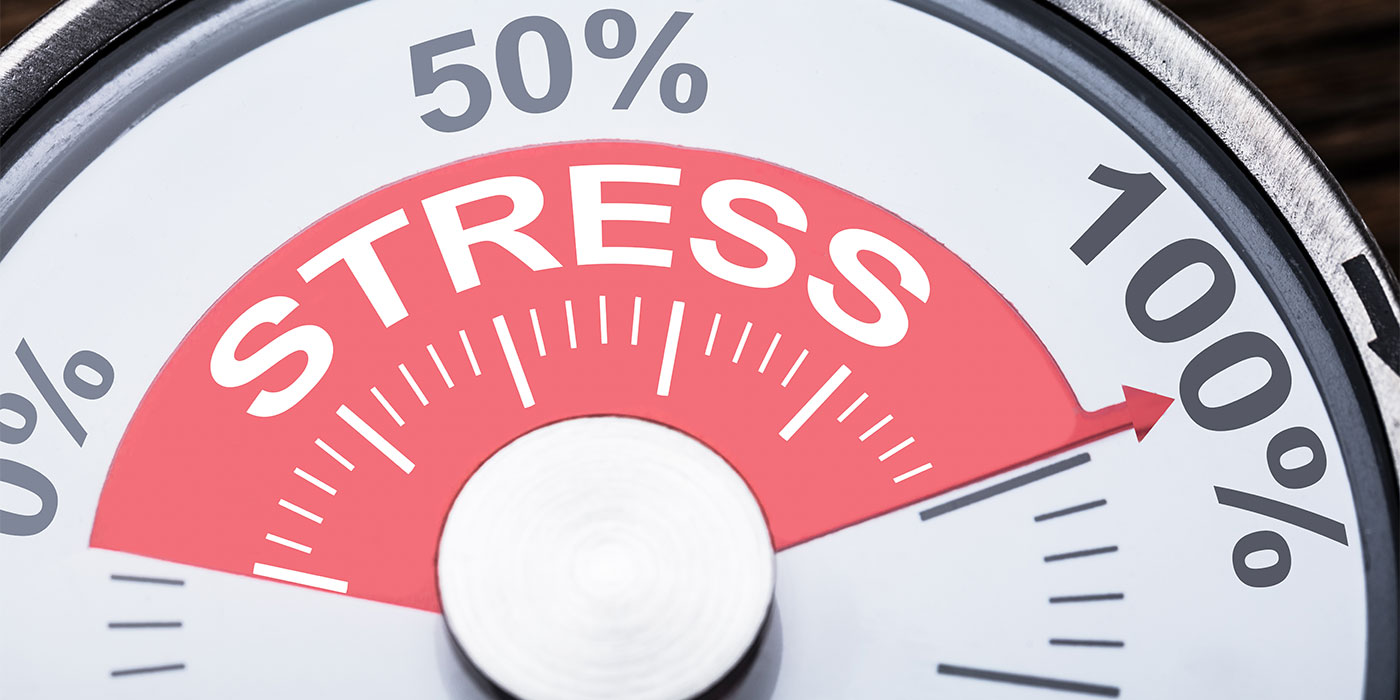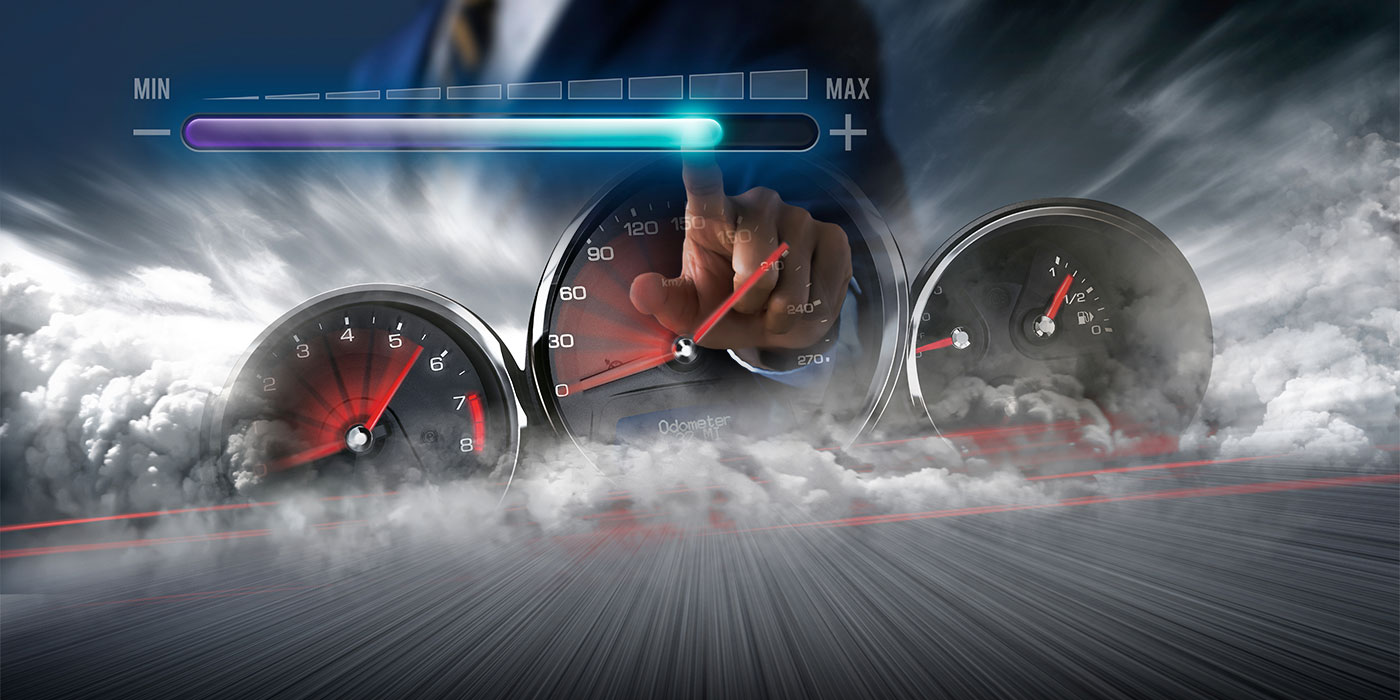It’s rare that I ever publicly discuss real-world situations when it comes to kaizen business. When teaching, it’s typically better to stay away from personal stuff as it distracts you from the real message. But I think I need to go out on a limb here, and so, for the only the second time since I’ve been writing about lean in BodyShop Business, I’m going to talk about a real issue we all face and how lean solutions can help.
Simplifying Lean
To simplify lean, let’s say its purpose is to eliminate waste. Why? Because the customer doesn’t want to pay for waste. But that statement has two sides to it. The first side says, “I’m not going to pay you for that stuff because it’s not what I want.” In reality, that may mean, “Sorry, pal, I’m not shopping here.” Or, it could mean, “Now that I know what you charged me for, I’m never shopping here again.” The second side says (internally), “We shouldn’t do that stuff anymore because customers say they won’t pay for it.”
Either way, from a lean perspective, waste is simple to understand. It’s the opposite of value, which is work or items that a customer does desire.
Why do I want to eliminate the unwanted work? Because I own a business and our organizational lifeblood is cash. We need to generate cash to support our organization, and the more of it we generate, the more we can do. It’s our fuel. The customer has this cash we need, so what are they specifically willing to exchange this cash for, and can we do more of that stuff and less of the rest?
Who is the customer and what do they want? We need to know these specifics so we can take these (their) specific wastes out.
Warning: If you believe the insurer isn’t the customer, stop reading here. I’m not judging, because I understand it’s a personal decision; it’s your business and everyone has the right to pick and choose who they serve. No hate mail please — I feel you and support your efforts. All I’m saying is that if you believe the insurer isn’t the customer and read on regardless, you’ll probably get a laugh at some of the silliness that follows.
Real World
So here’s the real-world, everyday situation for those of us who have chosen to recognize an insurer as a customer. Let’s say we can all recognize that an insurer clearly has a focus on waste. Remember, it’s the waste they see as a customer. It’s the stuff they don’t want to pay for.
For example, let’s look at an OEM part versus an aftermarket part. Let’s say the OEM part represents waste to insurers because it’s better than the current part that’s on the vehicle, and their policy only covers a loss to be returned to its current (pre-loss) condition. In other words, that’s the coverage that vehicle owner purchased, and anything over that is waste.
An insurance customer that has a role in the transaction as the financial manager is asking us to also address its problems: keep the costs down (for its sake and the policyholder’s sake) and do it in a way that keeps the vehicle owner satisfied, too. The collective customer says, “I’m willing to pay you to fix my car properly for the lowest possible price. For that, I’ll happily exchange cash and will probably patronize your organization in the future.”
If this is what they want, then our job, in a lean business is to deliver this in the least wasteful way. Remember, we as the internal customer have our own desire to pay less (cost less) to each part of our own organization. So our goal, by definition, is to find the least wasteful way to make this happen. We all have the same goal here so far: the insurer, driver and shop want to cost the least amount to get the highest level of satisfaction.
From here, we need to take a look at this from a value stream mapping perspective, which means thoroughly examining at the task-by-task level everything that happens to meet this end. Here’s what that might look like:
• Insurer writes estimate
• Insurer selects most economical parts available for repairs, along with most economical repair methods (clearly, I’m oversimplifying the insurer work here, but play along for a moment)
• Shop gets estimate
• Shop orders the written parts
• Shop receives parts
• Shop invoices parts (administrative processing)
• Shop pays for parts
• Shop reconciles these parts transactions
• Customer arrives for repairs
• Estimate is reviewed with customer, and quality/service/cost concerns are addressed (Hopefully, it was done tactfully and the customer isn’t already upset at everyone, including us)
• Parts are checked in and delivered to tech
• Tech begins repairs
• Tech discovers issues with “economy” parts
• Management is consulted
• Issues are investigated
• Issues are documented
• Vendors are contacted and consulted
• Parts are repackaged and returned
• Returns are generated administratively
• Vendors do their thing
• Credits are received
• Payments are reconciled
• New (OE) parts are ordered
• Estimates are changed
• Insurer does its thing
• Vehicle moves to “on hold status”
• Tech cleans up area, undoes this repair from his/her workload
• Shop receives parts
• Shop invoices parts (administrative processing)
• Shop pays for parts
• Shop reconciles these parts transactions
• Parts are checked in and delivered to tech
• Tech begins repairs again
As we all know, this doesn’t happen on every repair. Not all aftermarket parts have fit problems. Some are better than others and meet acceptable standards of fit, quality and finish. But clearly, they’re the economical choice for the insurer, which is why I selected them for this example. And for the sake of this example, we’re assuming that the shop acquired a part that was substandard.
So let’s throw some numbers out to see what’s really happening here. Remember, we’re saying that costing less is important to all three parties here. First, I’ll use some assumed averages to make some estimations:
• An average collision job is $2,800
• An average collision job has about 30 percent of the total parts dollars as non-OEM parts
• An average collision job contains about 38 percent parts dollars
• An aftermarket part is roughly 70 percent the price of an OEM part
• An average profit percentage for an aftermarket part is 40 percent
• An average profit percentage for an OEM part is about 28 percent
• According to all these numbers, this average job carries OEM parts sales of $744 with $208 of profit; non-OEM parts sales of $319 with $127 of profit
Now let me build a financial model for a shop. I’m going to base this on a shop with $1.8 million in annual revenue ($150,000 per month).
• The shop makes 5 percent net or $7,500 — which says its total costs (minus parts) based on the parts mix above would be $85,500 a month
• The average month is 22.3 days long
• There are 10,704 minutes this month — which says this shop’s cost is $7.98 per minute to operate
I’m putting this in a cost per minute term for two reasons: one, so we can see what time costs in a more relative term for comparison sake and two, my brain just works like this since throughput became the focus.
I think you would agree that these numbers aren’t perfect and may be better or worse than your reality, but they’re plausible enough to represent many shops…at least the ones that might read this article.
Next , if we were to go back and assign time in minutes to the work activities done today, we might be able to get a clearer picture. So let me try, but let’s only count the activities associated with the waste. We’ll just look at the waste of rework (doing it twice). The waste steps are in bold:
• Shop gets estimate
• Shop orders the written parts
• Shop receives parts
• Shop invoices parts (administrative processing)
• Shop pays for parts
• Shop reconciles these parts transactions
• Customer arrives for repairs
• Estimates reviewed with customer and quality/ service/cost concerns are addressed
• Parts are checked in and delivered to tech
• Tech begins repairs
• Tech discovers issues with parts (5 minutes wasted)
• Management is consulted (10)
• Issues are investigated (10)
• Issues are documented (15)
• Vendors are contacted and consulted (10)
• Parts are repackaged and returned (15)
• Returns are generated administratively (5)
• Vendors do their thing
• Credits are received (5)
• Payments are reconciled (5)
• New (OE) parts are ordered (5)
• Estimates are changed (10)
• Insurer does its thing
• Vehicle moves to “on hold” (10)
• Tech cleans up area and undoes this repair from his/her work plan (20)
• Shop receives parts (15)
• Shop invoices parts (administrative processing) (5)
• Shop pays for parts (5)
• Shop reconciles these parts transactions (5)
• Parts are checked in and delivered to tech (15)
• Tech begins repairs again (20)
Total Waste Time = 185 minutes
For this shop, it was 185 minutes’ worth of waste. We know that a minute costs about $8, but what really happened here? There are three important things to ponder: 1) How would lean shop experience and address this issue? 2) What’s the effect on a traditional shop? 3) In either scenario, isn’t there a better way?
Kaizen Strategy
In a shop that uses a kaizen strategy, or continuous improvement, the value as defined by the customer is configured in a system of flow so that the system may begin to appropriately fail, revealing the problems that need to be corrected so that the customer is better served. In this shop, a problem of this nature would shut down the entire system by design. Because this system is connected end-to-end (first contact of loss to money in the bank and all points in between), the cost of this stoppage is exactly what the math would say: 185 minutes at $7.98 per minute or an astronomical $1,476.30.
Now pose that against the attempted cost savings, which the math would show as:
• 38 percent of 2,800 = $1,064 in average parts sales
• 30 percent of that (or $319.20) would be 30 percent cheaper to purchase, or $95.76 in savings
From the insurer’s or driver’s perspective, the attempt was to lower the claim cost by about $100. I know that the math isn’t perfect because the $2,800 severity would be higher, but play along…it’s close enough to make the point. For the lean shop, the failed attempt to use the more economical part, or to save the customer $100, cost it about $1,400. So even one failed attempt to save $100 per month could cripple you.
In a kaizen business, this problem would have appropriately revealed itself by saying, “You better change this scenario so it never happens again.” It has appropriately presented itself as both obvious and painful.
But what effect does this have on a regular old body shop? The amount of work that needs to be done to correct this part failure issue is about the same, but the financial impact isn’t. For this shop, because the problem only affects one body technician out of the five or six a shop like this would have, its financial impact is maybe only 15 to 20 percent as big. In other words, the rest of the crew can keep fixing cars. So let’s call it 15 percent, which is a $221.40 cost to save $100 — clearly a much more efficient way to lose money.
But wait. Because this shop hasn’t committed to a flow of work, it naturally has a higher expense structure. It needs to have more inventory of cars so that when these problems (stoppages in work) happen, it can keep producing other work. Any lean business can show you this expense — it’s the sum of the costs associated with keeping all this extra stuff around. For example, the cost of holding parts for about twice as many cars as a lean business, the cost of the square footage to store these extra cars, the cost of administrative people to manage these extra cars, the cost of breakage in the held extra cars, etc. That’s stuff like rental expense for late ones and materials wasted in the start-stop process. It’s hard to throw a number at it, but typically, any kind of lean business can reduce its operating expense greatly.
So I’ll use my experience and say the shop could reduce its operating expense by 20 percent if it were lean, which is $17,000 less expense per month or, in this case, $320 per car ($150,000 monthly revenue divided by $2,800 severity or 53.5 cars per month). Together, the shop spent $540 to save $100. Well done!
By the way, the difference between the kaizen shop and the traditional shop is that, in a kaizen shop, this problem would only happen a couple times and be removed forever, whereas the traditional shop would continue to incur the expense. Looking at the big picture, the traditional shop experiences a lot more expense, as it never ends.
What We Want
Isn’t it true that all the actors in the collision repair experience want the same thing: High quality, low cost and speed (or some aspect of availability and timeliness)?
For the vehicle owner, all three are obviously wanted. The insurer needs to have all three, too, because it’s how its business works. It needs to settle claims as cost effectively as possible with the highest level of satisfaction for its insureds. And the shop needs to keep its costs as low as possible, too, because it’s the only way it can profit because the customer already said low price is what they need.
Quality, absolutely — we can’t turn junk out our doors because we’ll be out of business. Speed (delivery aspects), yes. The longer we have this stuff, the more it costs us (inventory is the greatest expense) and the less satisfied a customer becomes. So how come we continue to find the most expensive ways to reduce our costs? Is it that we think we can raise the price? Really?
Take a look at the insurer for a moment. What expense does it incur in trying to keep costs down? If you did a value stream map of every task it performed to try and make a certain part work and figured out what its cost per minute was, I’m sure it would blow your mind. It’s got to be a multiple of what a shop experiences.
If you go back and look at the cost for this “traditional shop” model above, it would actually be cheaper just to buy all OE parts and eat the price difference:
• OEM parts price increase of 30 percent vs. aftermarket = $136 extra out of pocket before discount, or about $10 after the 28 percent discount
• Add back the lost profit of $127 from the aftermarket part
• Net loss on parts = $137
• Cost to process return = $200 to $500
In this case, the shop is ahead by anywhere from $60 to several hundred dollars if it just bought the good stuff right from the get go! Where’s the balance between how many times this happens and how much it might cost you if you did it all the time? I don’t know, but you can figure it out if you really want to. But that’s not the point here, nor is it to suggest that this is the answer. It’s to suggest just how silly this whole thing has become. Why in the world do we all spend these ridiculous sums of cash to create low cost? It makes zero sense. Are we all really this crazy? Don’t any of us involved in the transaction see this? Have we all lost sight of the facts, or for that sake, the customer?
It comes down to this: It’s a matter of the value stream, the whole value stream, the real value stream. That’s every party involved from the time the car comes to rest after the collision until the bill is happily paid in full. This is where we need to remove waste so all of us can effectively reduce our cost. It’s, “What are the specific actions needed to deliver the specific value that the customer wants?” not, “What are my needs versus your needs?” It’s about the real customer’s needs, the one who’s paying the bill: the collective policy payers.
How Do We Get There?
Until all parties start looking at the value stream together, we’ll never realize the potential of what we can provide for the customer and for our organizations. The real value to the customer is only a mere fraction of junk we (insurers and shops) do on a daily basis. Why won’t anyone admit it? And how and where do you start? How do we get there?
All the above modeled numbers aren’t to suggest a way to create better performance or meant to be mathematically accurate formulas. I used them to potentially help everyone see the insanity and to learn to see the waste that’s built in that’s only getting worse. Shops can’t endure ongoing insurer beatdowns in the name of the customer. Insurers can’t survive continual policyholder rate increases because there’s too much competition. Drivers don’t want to be dragged through the mud of the claims process and our constant finger-pointing. Where does it all end?
We all know that many shops have closed and many more will. We all know claims counts are down and most likely will stay there. We all know that policyholders are jumping ship at alarming rates. We all know that drivers want more and more from us. But the current formula can only lead to one thing: mutual self-destruction.
We know that we’ll go first, long before an insurer does. We’re just a bunch of independent small businesses that can barely stand the sight of each other. And we know that things will change when only a handful of shops remain and we have the upper hand. But does that serve any of us? Does that serve the customer?
What if shops and insurers sat together to figure out how to better serve the customer? What if waste was truly eliminated, not just shifted from one party to the other? Could we actually lower the cost of repairs for all of us, including the driver, while actually increasing profits and service? The simple math says yes!
Maybe someone somewhere who can actually do something about it will finally recognize the potential we have here and step up just because it’s right. Until then, I guess we’ll either just keep trying to do the right thing by the customer and hope the beatings don’t kill us or just keep hitting back…neither of which sounds very rewarding. What a shame…because we all want the same thing.
John Sweigart has developed the knowledge of the Toyota Production System and its execution over the past 11 years. As director of lean operations and ultimately national director of operations for Sterling Collision Centers, Sweigart helped lead its operations and production model growth up to and through its acquisition by the Allstate Corporation. Sweigart also acts as senior lean coach for Murli & Associates, a Connecticut-based lean consulting firm with clients in industries such as transportation, construction and insurance. Today, Sweigart’s primary function as direction leader of The Body Shop @, a Pennsylvania-based collision repair organization, allows him to further develop the discovery and value creation of kaizen in the collision repair industry. Its “Star-Link Certified” collision repair system knowledge is now exclusively offered to the industry through a strategic alliance with DuPont Performance Coatings.














